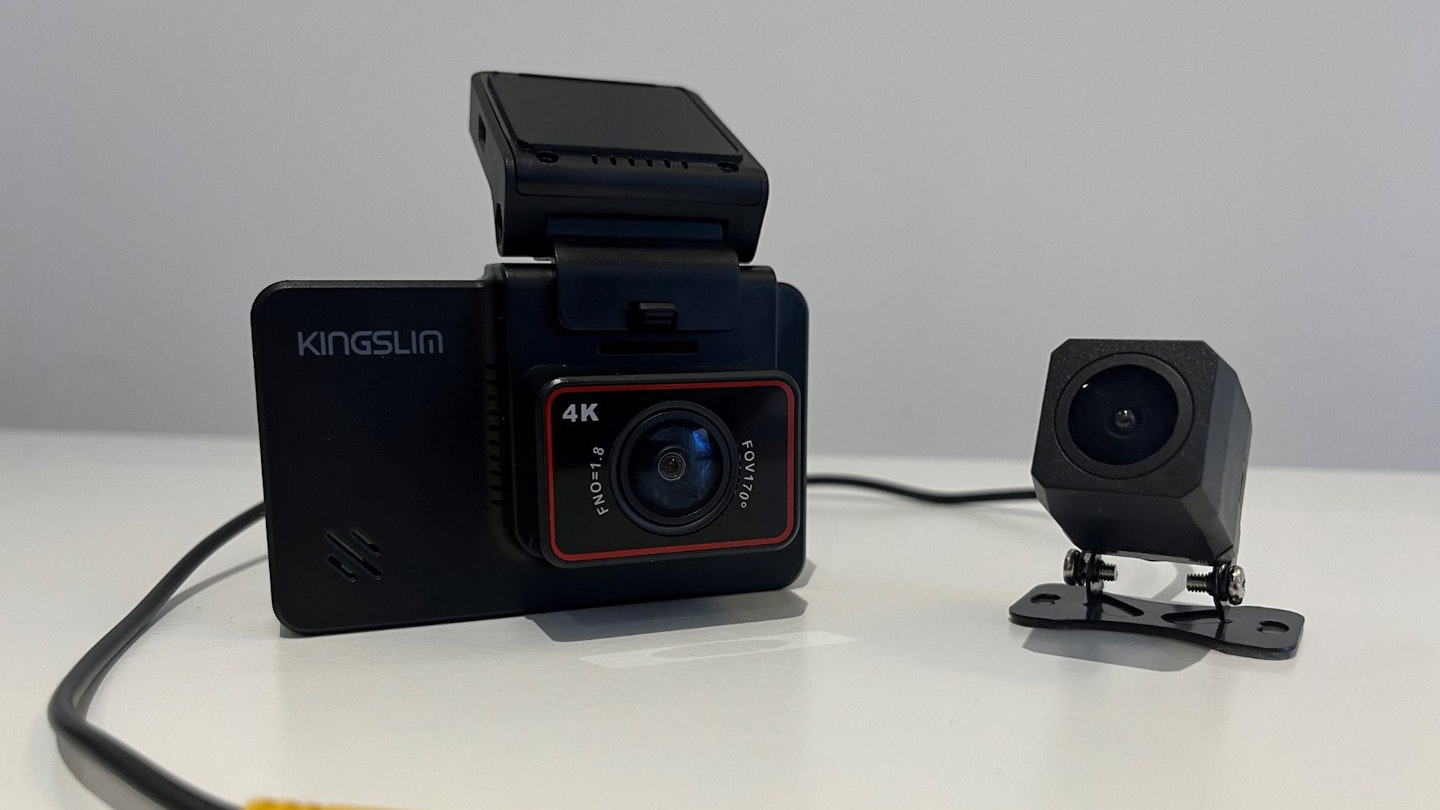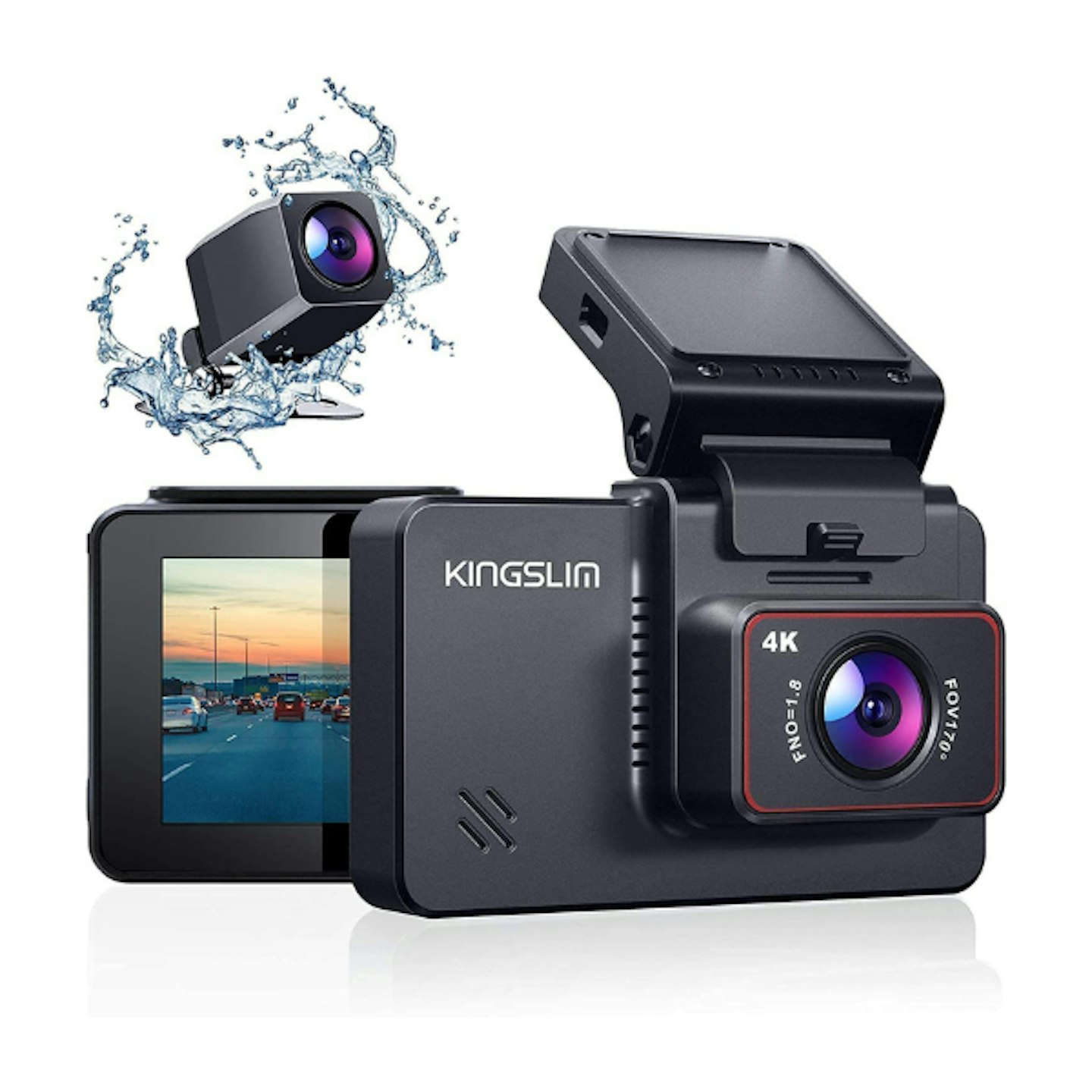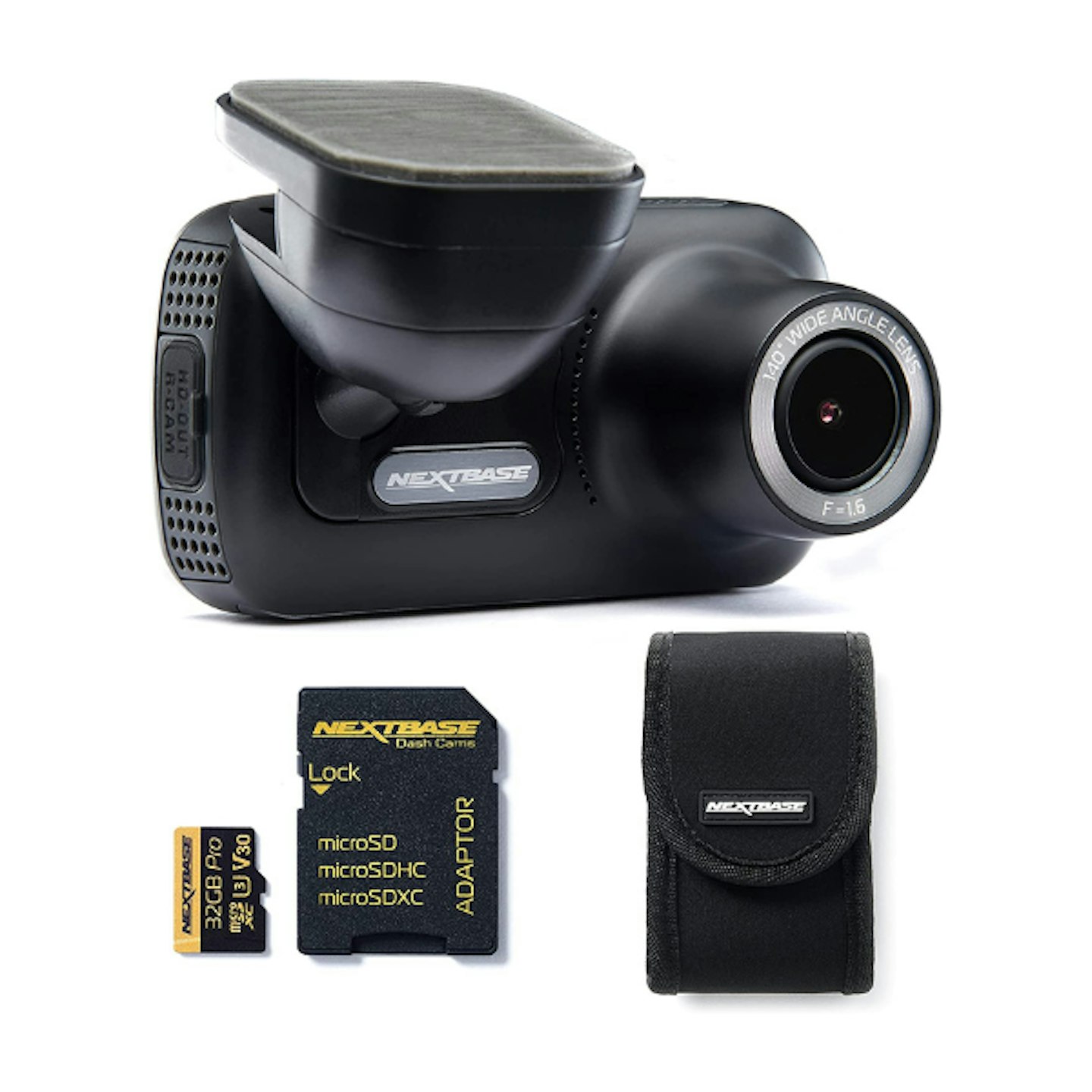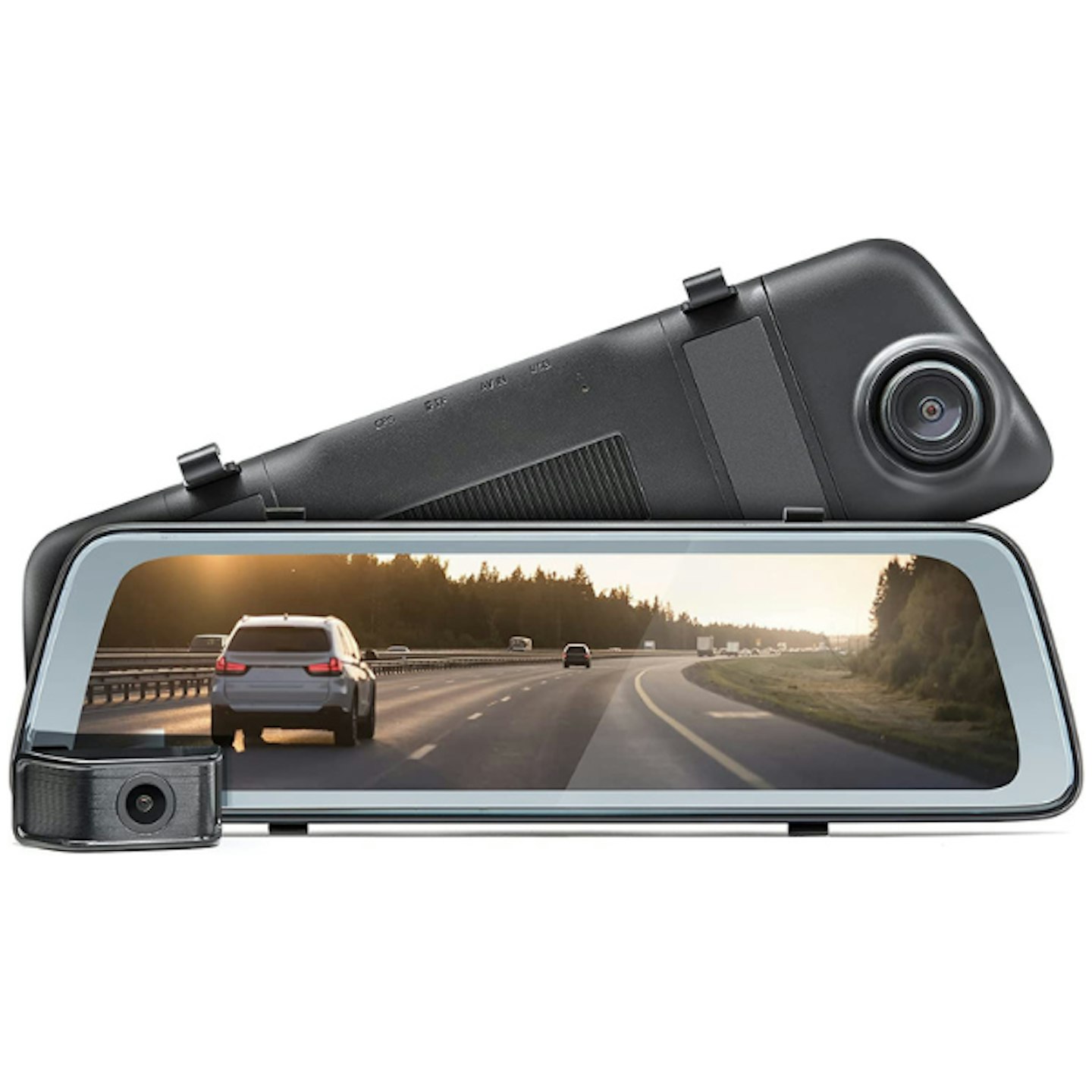If you’re in the market for a new dash cam, you’ve got quite a tricky decision on your hands. While we commend anyone willing to invest in an onboard car camera, be it for security purposes or to improve on driving technique, the market for dash cams is so saturated these days that finding the right one can be difficult. From mini dash cams to the flagship windscreen minicomputers, there are myriad options out there across a wide spectrum. Right in the middle, however, is a fantastic range of sweet spot options loaded with great tech for some very reasonable prices, and somewhere within this company is the Kingslim D4.
The Kingslim D4 is a dual dash cam, supporting both front and rear video cover while on the go. It’s a compact device, replete with intelligent tech to keep you safe and secure on the road, but is it worth the £120 price tag, and how does it fare against the competition? I’ve put it to the test to find out.
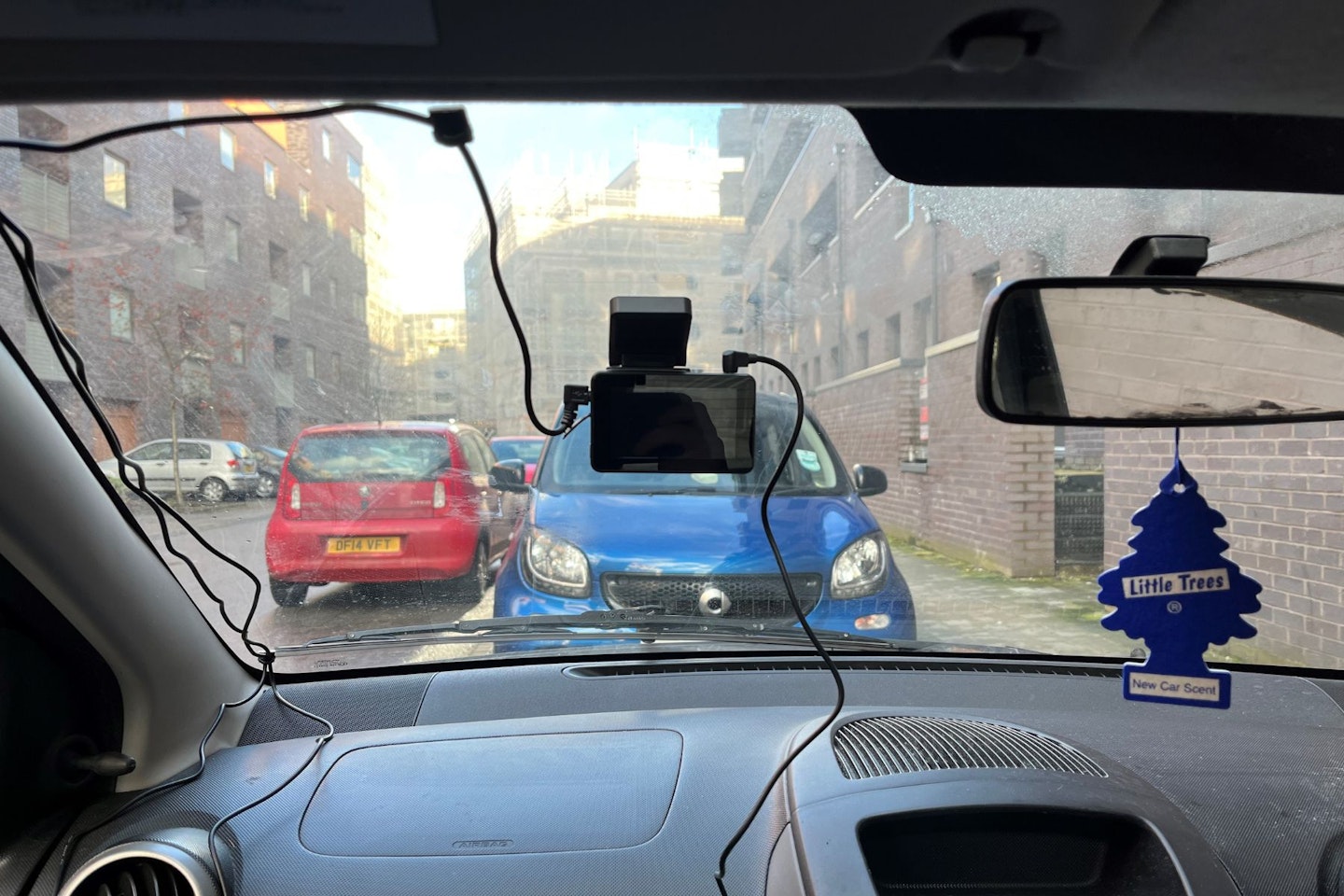
First impressions and set up
Straight out of the box, the D4 is a neat, compact device with a footprint roughly the size of a tea bag. The lens of the D4 protrudes about 1.3cm out from the camera’s front face while the rear side boasts a three-inch IPS touchscreen display. I wouldn’t consider this to be a mini dash cam but it is certainly on the smaller side of the mid-size range.
Along with the principal camera, the pack includes the rear-facing camera, roughly 2cm long and 1cm wide, a collection of adhesives, clips and windscreen stickers, a prying tool, the instruction manual and what seemed like enough cabling to wire the internals of a Typhoon-Class submarine, but more on that later.
Setting up the device was a relatively easy task. Once I attached the adhesive clip to the camera, I then applied the adhesive sticker. Once I’d cleaned and dried my windscreen, I applied the static sticker to the glass and then stuck my dash cam in place, choosing the left side of my rear-view mirror so as not to obstruct my view.
Rear camera
As for the rear camera, Kingslim provides two options: either position the camera within the cabin via an adhesive sticker or drill holes into your rear bumper to screw it in. While it may have compromised the viewing position of the camera, I chose to stick it inside my cabin to avoid damaging my car. Although the instruction manual had been clear up until this point, I thought Kingslim's cable management solution diagrams for exterior installation were vague and unhelpful.
I ended up sticking the camera to the rear of my cabin ceiling, organizing the cables to run down the length of the car, then plugged the power cable of the rear camera into the primary camera. Having already plugged the 12V lighter jack in, it was all ready to go – twist ignition to start.
Footage
With a 170-degree field of view and f/1.8 aperture rating, the D4 can shoot high-quality, detailed footage. Owing to the D4’s 4K resolution quality, upon inspection of my footage, I was able to easily pick out various details, including number plates and other small pieces of text that passed me as I drove along. The provision of crisp and detailed imagery is a critically important quality in any great dash cam as you may need to later rely on these details in court. In this regard, the D4 excelled.
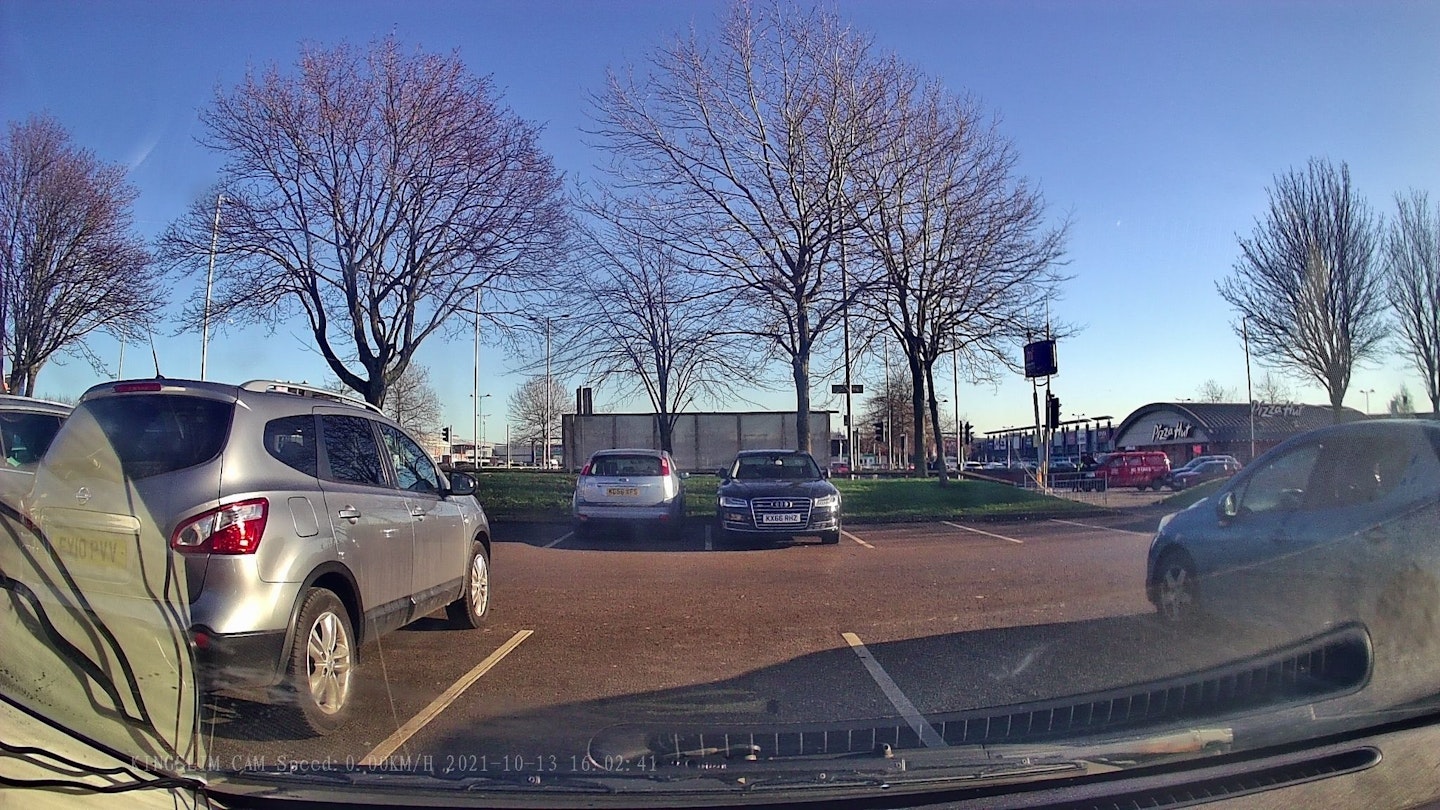
While the front camera is capable of shooting in 4K with a 170-degree field of view, the rear-facing camera is limited to 1080p footage with a 150-degree FOV and f/2.0 aperture rating, though I found this to be perfectly adequate as I was still able to pick out many details.
Once plugged in and on the go, the rear-facing touchscreen will display the ongoing footage as it’s being recorded, along with a small view of the D4’s rear facing camera in the top right-hand side of the screen. I particularly enjoyed being able to monitor both cameras at the same time, rather than waiting to review the footage in order to inspect what the rear-facing camera was able to capture. The camera continuously loop records footage as you drive along, saving it to your installed SD card (not included with the camera). Along with its continuous loop recording function, the D4 can also emergency record, saving specific events to a separate folder for users to later inspect.
Filming at night
I found the D4 to be an exemplary night-time dash cam. Thanks to the Sony Starvis sensors fitted to the D4 as standard, it offers superb night vision for a model of this price. The video footage it captured was bright and detailed despite the low light, allowing me to still pick out certain details even in darkness.

The display
The D4’s 3” IPS touchscreen made the device especially easy to navigate – it was sharp, sensitive, and invariably responsive to my input. From the screen drivers can stop/start recording, activate/deactivate audio capture from the built-in microphone, connect to Wi-Fi and peruse the video albums where your footage is continuously saved.
While this might be useful for reviewing events shortly after they occur, I found the display too small and the camera angle too wide to pick out any key details on the camera itself. On the other hand, I found the slide-to-screenshot feature useful as I was able to capture a few of my favourite moments quickly and simply, rather than retrieving the images from the footage on my phone or computer later on.
From the display, users can configure the camera’s abilities to their own preference, with bump sensitivity, resolution quality (the front facing camera can shoot in either 2K or 4K at 30fps) and loop recording intervals all customisable. As the D4 includes a GPS as standard, its data can also be inspected on the device.
The app
To spare you the laborious task of retrieving your footage from your SD card, Kingslim offers cloud retrieval via its user app. By tapping the Wi-Fi button on the display, users activate the D4’s built-in Wi-Fi signal then connect up their phones to retrieve the footage wirelessly. It’s a common feature on most modern dash cams, only I found the signal to be weak, inconsistent and prone to failure. After several attempts, I was able to connect my phone and the app to the camera’s Wi-Fi and not only review my footage in high definition but download it, too.
Though I found the process of connecting up my phone and registering the device exasperating, once connected, the app became a useful tool. Instead of going into the settings on the device itself – challenging and inconvenient if the camera is already in position – users can customise the abilities of their D4 camera from the app.
Any negatives?
The D4 is a great dash cam but it also has its drawbacks. The Citroen C1 in which I tested the device is a small car, but the one-size-to-fit-all cables included in the pack are very long. As Kingslim only includes a handful of adhesive clips in the pack, with the rear camera cable running from the back of the vehicle and the main power cable leading down from the dash cam to the centre console, there long were stretches of cable left dangling around the cabin of my car, as though I was driving around in a rolling tea party on Jubilee weekend. I think that more clips should be included in the pack to improve cable management in small cars, or perhaps different cable length sets should be available for consumers to specify before purchase.
Price and competition
Available for under £120, I think the D4 is very reasonably priced. Given that it supports 4K video, offers front and rear cover and has a touch screen display, it’s a lot of dash cam for the money. There are other dash cams on the market for roughly the same price that might be easier set up, use a more competent cloud app or feature lighter, shorter cables, but most won’t come with rear cameras as standard. If you want as much cover as you can get for a great price, the D4 will be hard to beat.
Verdict
Overall, I found the D4 easy enough to live with. It produced crisp and clear video footage with enough detail for users to rely on and enough gadgets to make the overall experience pleasant and efficient. I think for the price, given that the pack offers front and rear video cover, it’s a quality item. Just be ready with the tape if you don’t have cabin panel gaps to hide your cables in.
Score: 4/5
**Pros:
**• Crisp and clear footage
• Easy to navigate
**Cons:
**• Excessively long and heavy cables can make your cabin feel like a Christmas tree
Specs
Resolution: 4K front/1080P rear
Frame rate: 30 FPS
Field of view: 170° front/150° rear
App: IOS, Android
Parking mode: Yes
Built in Wi-FI: Yes
Built in GPS: Yes
SD storage: up to 256 GB
Display: 3"
Other options
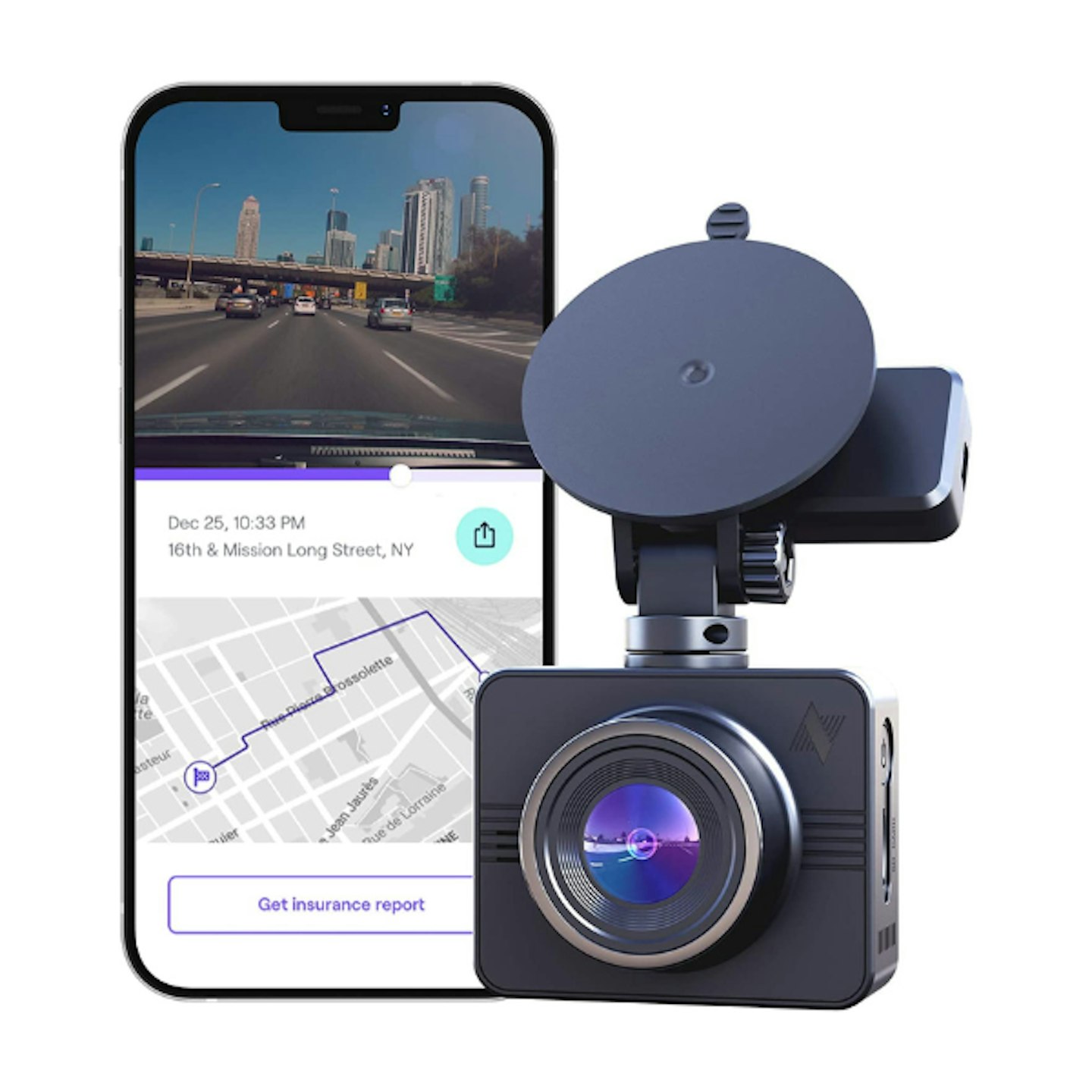
How was the D4 tested?
The dash cam was tested consistently over the course of two weeks. I would apply and then take the device down when not in use for security reasons but I would leave the cables up. I was able to get to grips with every feature while testing the camera throughout different times of the day for a comprehensive understanding.
